Polar has just announced their Vantage M3, a watch that aims to complete a trio of watch hardware options from the company, and ultimately, complete their transition to AMOLED devices. I kinda honestly thought that they’d skip making an M3 and would let the Polar Pacer line bring up the rear, but M3 it is. Ultimately, it doesn’t much matter what they call it, because as you’ll see, the differences are purely hardware based.
And that’s the notable thing. Over the last 12 months (almost to the day), Polar has now released three AMOELD watches: First, the Vantage V3 last October, then the Grit X2 Pro last March, and now the Vantage M3. All watches AMOLED, all with mapping, and all with identical software features. Yes, identical. The idea being that consumers can choose which hardware they want, with the differences simply being exterior case/band design, battery life, and display size. That’s it. And Polar says that’s the direction going forward as well, and doubled down on that by announcing their next set of features for early 2025 that’ll come to all three watches.
In any case, I’ve been testing the M3 for the last little while, putting it though it’s paces on runs, rides, swims, and everything in between – including just 24×7 wear. I’ve got a pretty good feel for where it works well, and where it falls a bit short. With that, let’s dive into it.
What’s New:
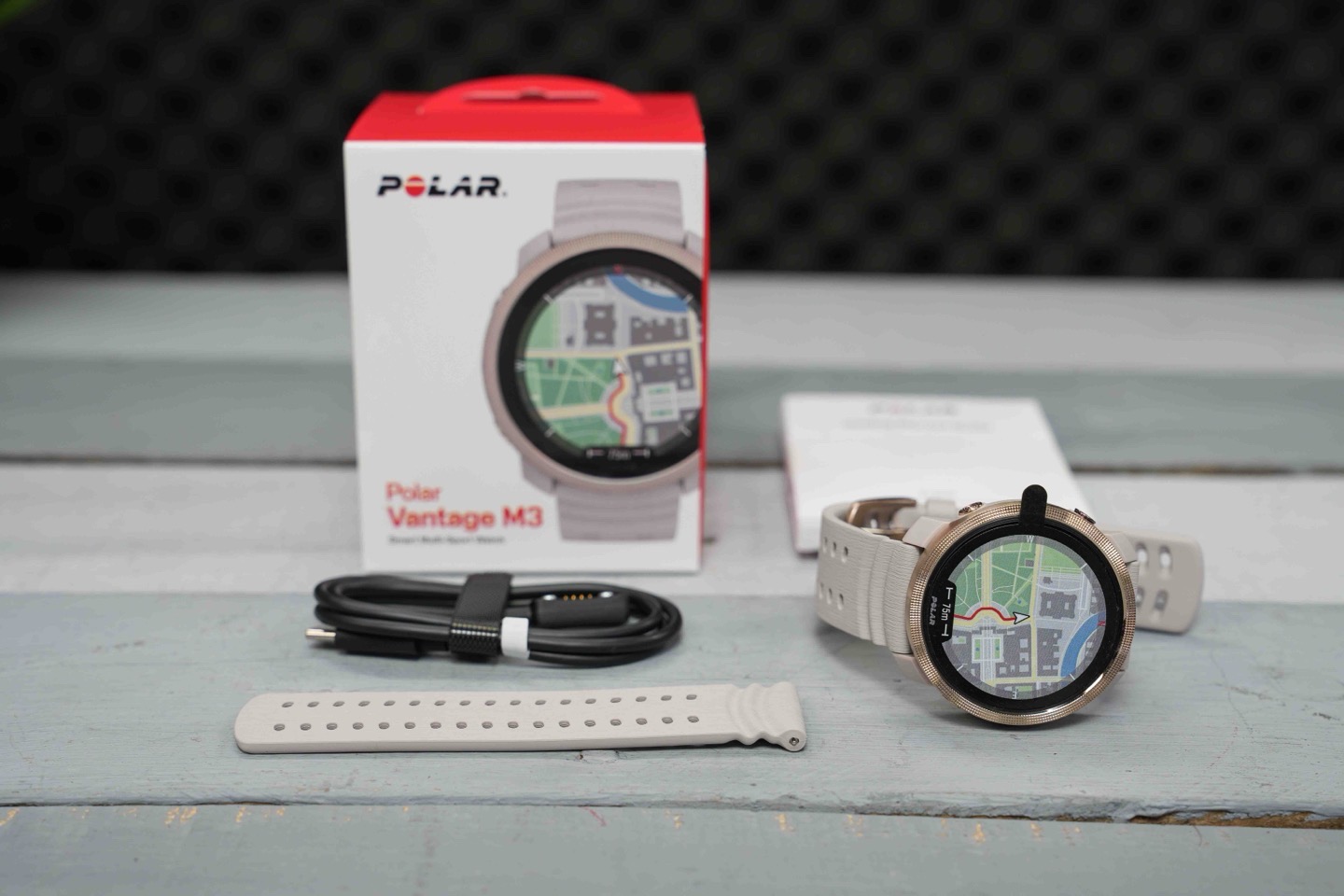
In some ways, this is an easy section, because the answer is ‘not a lot’, when compared to the Vantage M2, at least in terms of big ticket items. However, the devil is in the detail, because there’s actually a ton of little ticket items that have been rolled into the Vantage V3/Grit X2 Pro software platform over the last year, that might otherwise be skipped over. In any event, here’s what’s new:
– Switched from MIP-based display to 1.28” AMOLED display
– New display includes touchscreen (that M2 didn’t have)
– Switched from 2nd Gen Optical HR sensor to 4th Gen Sensor
– Added SpO2 tracking
– Added Skin Temperature Tracking
– Added ECG feature (note: does not include Afib detection)
– Added dual-frequency/dual-band GPS/GNSS
– Added offline maps (yes, full color offline maps)
– Added route/navigation following/guidance
– Added voice guidance (with paired headphones)
– Added Hill Splitter feature
– Added watch face widgets/adjustments
– Added Recovery Pro with Orthostatic Test
– Added SleepWise
– Added FuelWise
– Added Walking Test, Running Test, Cycling Test
– Added Vertical Speed & VAM metrics
– Added 3D Speed
– Added display flashlight feature
– Weight is 53g, case size is 44mm wide and 12mm thick
– Uses standard 22mm bands
– Display is Gorilla Glass 3
– Bezel is stainless steel
– Maintained same 7 day smartwatch & 30 hours GPS tracking spec
– Internal storage is 32GB (same as Vantage V3/Grit X2 Pro)
– Processor is 275Mhz, RAM is 37MB, and battery is 310mAh
– Display is 325ppi @ max brightness of 1,500 nits
– Supports temp range from -20*C to +50*C (same as Vantage V3/Grit X2 Pro)
– USB-C charging cable using same as Vantage V3/Grit X2 Pro
– Price is $399USD/EUR or 349GBP. Offered in white or black
– Battery is fully replaceable via Polar Repair Center (certain markets)
Here’s a few photos of it (and obviously, there’s the entire video of footage up above, including a user interface tour):
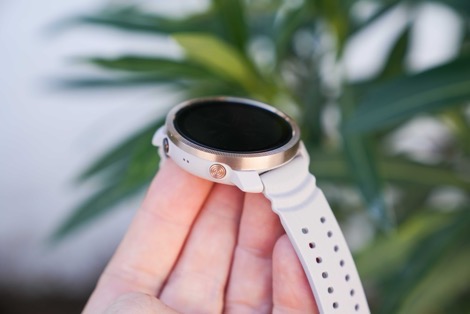
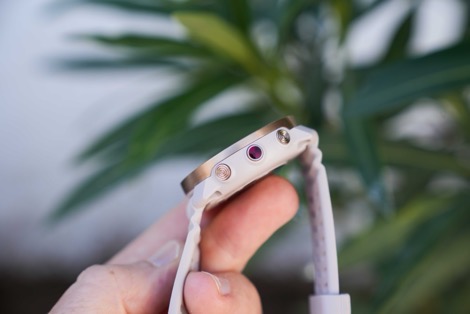
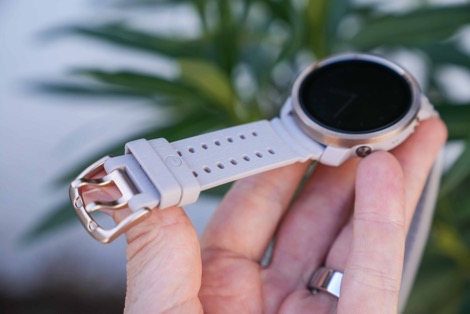
I think it looks quite nice actually, especially the accents and button design.
So then, what’s the difference between the three watches? Well in short:
– Grit X2 Pro is $749USD, Vantage V3 is $599USD
– Vantage V3 & Grit X2 Pro have 43HRS GPS & 140hrs in Eco Training Mode, vs 30hrs/70hrs on Vantage M3
– Grit X2 Pro/Vantage V3 is 1.39” display, M3 is 1.28” display
– Grit X2 Pro/Vantage V3 have 1,050 nit display, M3 is 1,500 nits
– Grit X2 Pro has 100m water resistance, Vantage M3/V3 have 50m water resistance
– Grit X2 Pro has 810H durability mil spec, others do not
– Grit X2 Pro/Vantage V3 has 1.39” AMOLED display, M3 has 1.28” display
– Grit X2 Pro is sapphire crystal glass, versus M3 is Gorilla Glass
– Grit X2 Pro has a stainless steal case, Vantage V3 has an aluminum case, plastic case
– All three have some form of metal bezel
Here’s a look at all of them side-by-side:

And from the side:

I will finish up saying I’m still a bit surprised Polar decided to continue the M3 series. While long-time Polar regulars/fans will understand the differences between the M & V series, most people new to the brand won’t easily decode these on first sight/search. Thus, I would have thought that the Polar Pacer/Pacer Pro series/branding would have made more sense to bring up the rear (plus Grit + Vantage series). Obviously, companies like Garmin have far more byzantine and sprawling naming and model layouts, but given Polar’s goal of attracting new customers, simplification is key. Anyways, I had to fit my two cents in here somewhere. I’m sure we’ll talk about it more in the FIT File Podcast.
A Look At Accuracy:
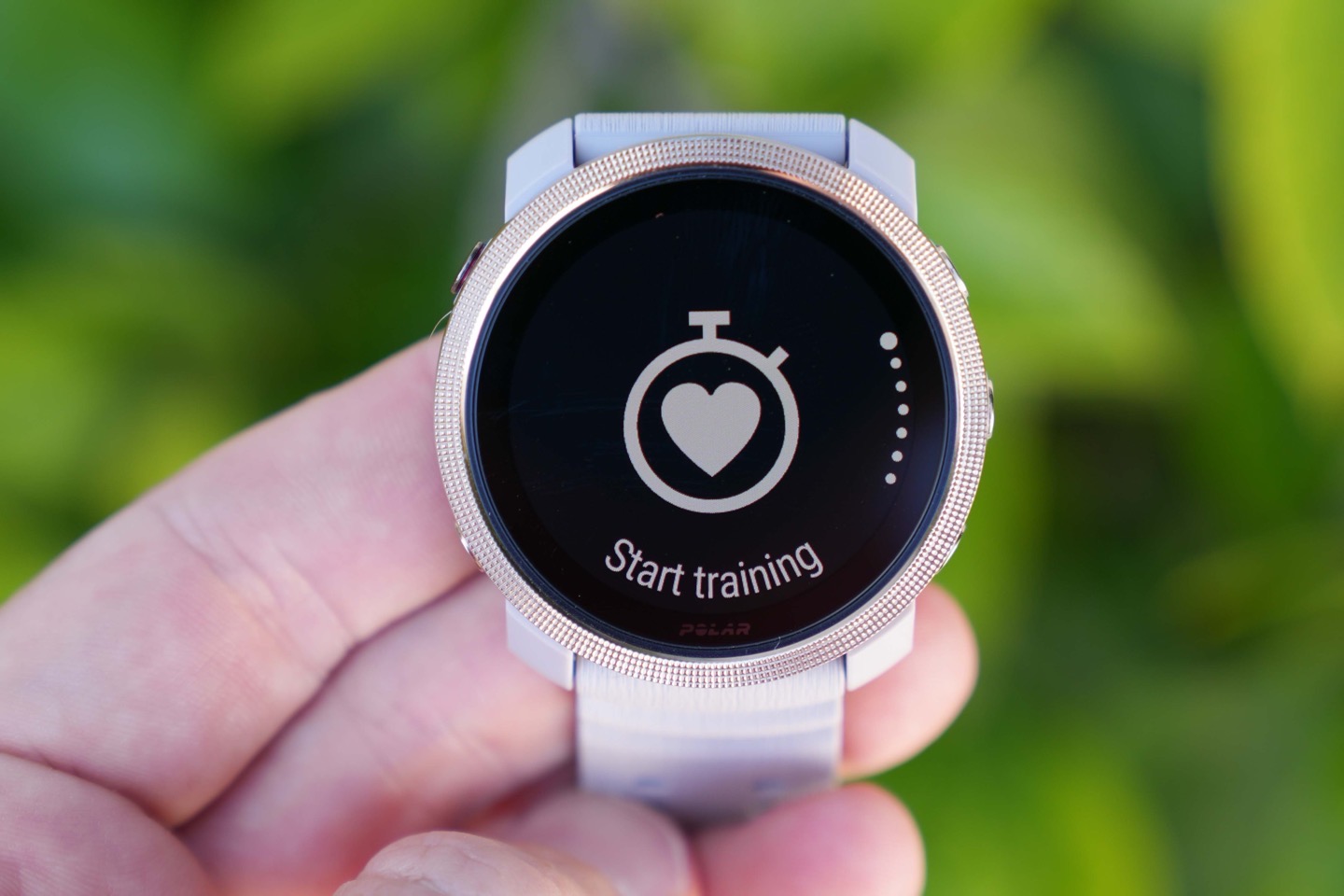
Now, taking a Quick Look at accuracy, on the whole things seem pretty good – and seem actually improved over the Vantage V3 & Polar Grit X2 Pro that I’ve tested over the past year. It’d be interesting to see if updates arrive on those watches to address HR accuracy issues I’ve seen from an optical heart rate sensor standpoint.
In any event, let’s look at a handful of workouts from the past little while, starting with last night’s interval workout:

Here you can se this is virtually spot-on, albeit with a few second delay on some of the interval recovery pieces. But no major errors here to be concerned about.
The same is true of another interval (running) workout from a few days prior, also very solid performance there:

Meanwhile, a trainer workout I did was OK-ish. Not amazing, but not bad either. Just a tiny bit latent at times that you don’t usually see optical HR sensors be latent on indoor workouts (outdoors is different).

However, the heart rate accuracy on this longer ride was definitely hot dumpster fire mess status. While some watches struggle outdoors on roads, this should have been pretty easy, but alas, you can see the struggle bus was real.
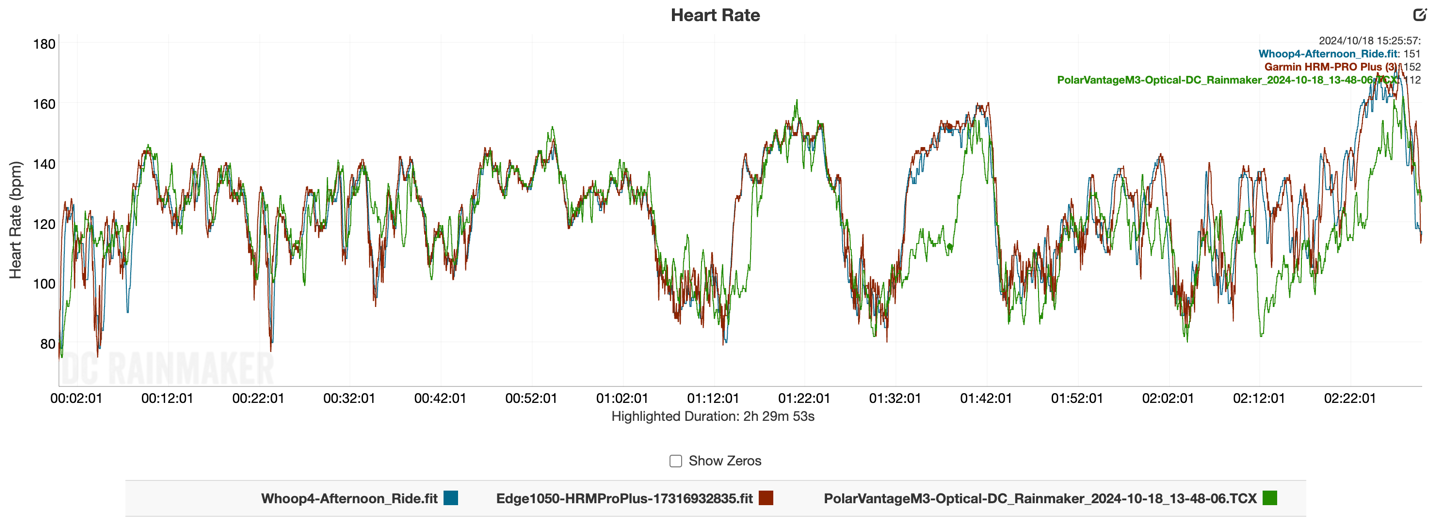
Switching over to some GPS tracks, overall things look reasonably good here. For example, I did an interval run with a gazillion loops around this circuit, and the tracks are very much spot-on:
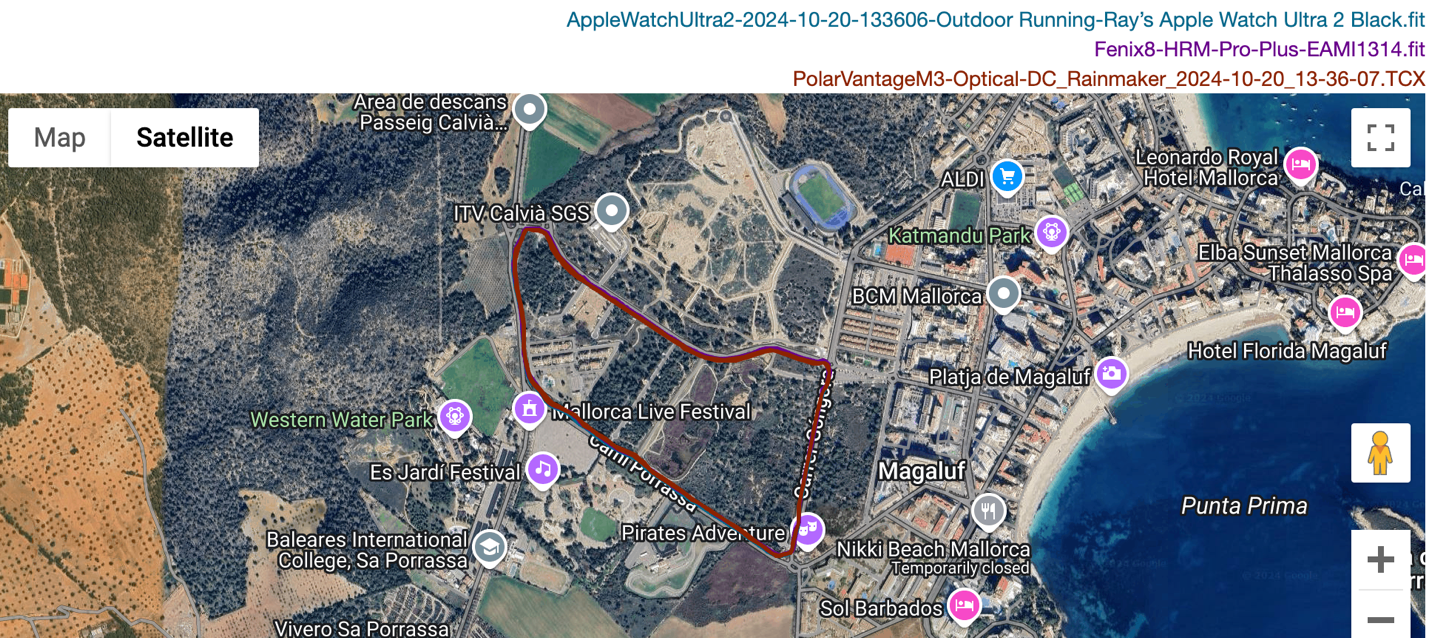
Some very slight differences (by a few meters) between watches, but all very close:
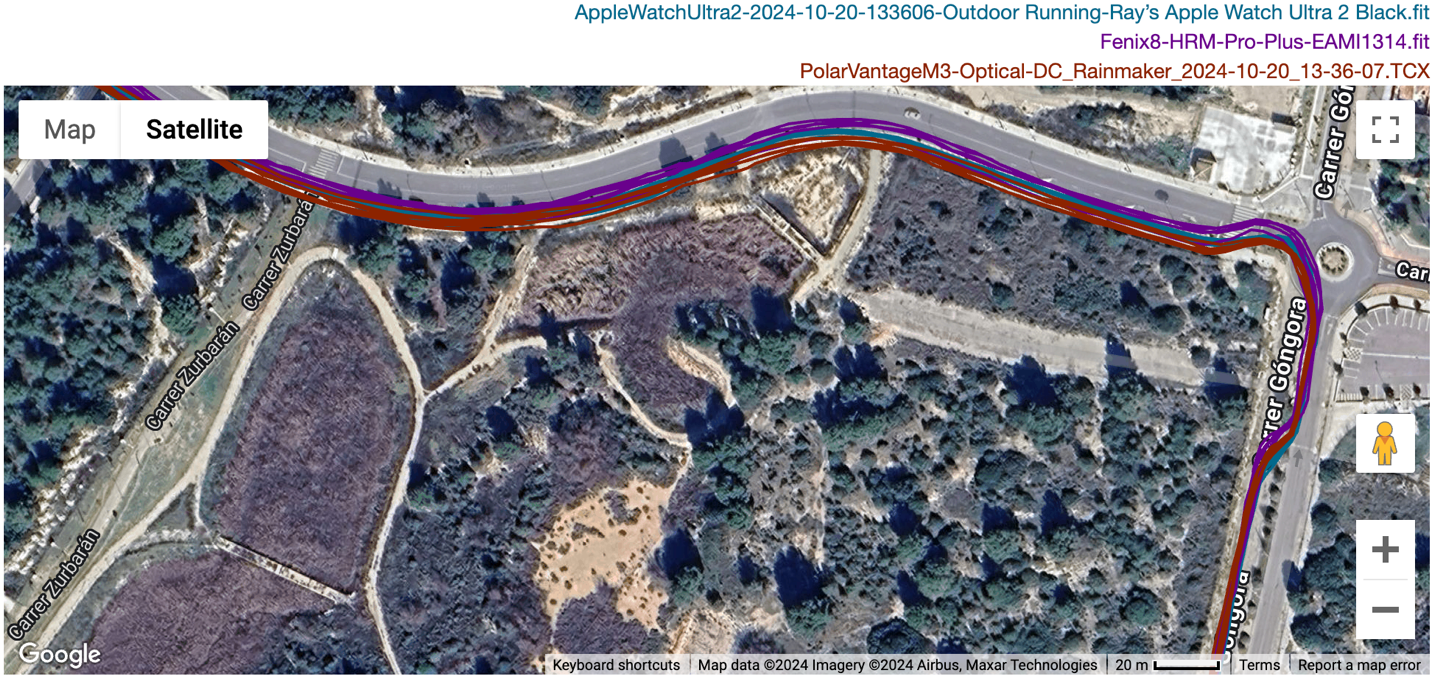
Here’s another run, this one from last night, a bit more meandering at first:
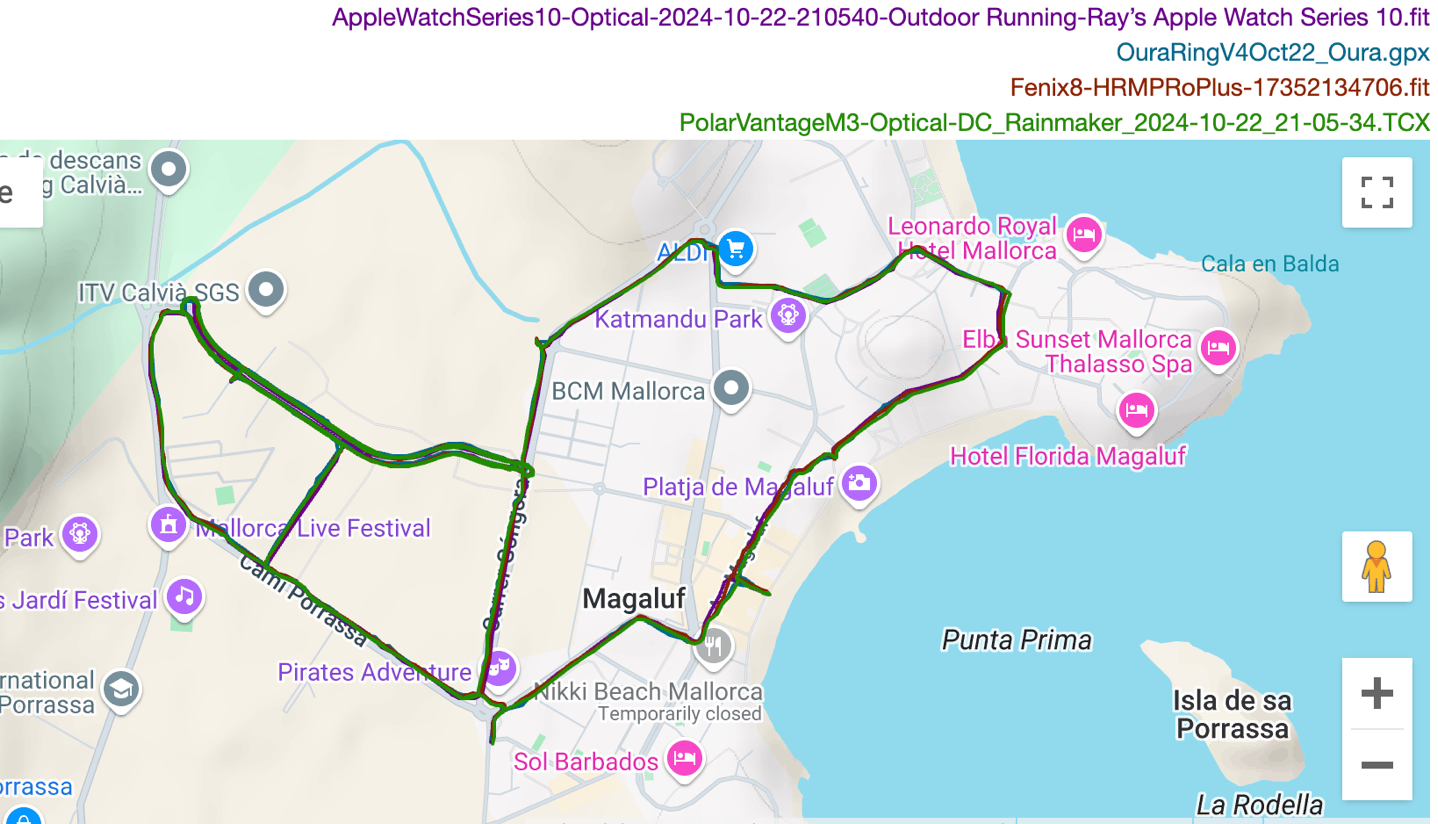
Notably, this section new some high-rise hotels/buildings, the M3 did struggle slightly compared to the Apple Watch Series 10, and Garmin Fenix 8. Not hugely, but just a tiny bit cutting some corners:
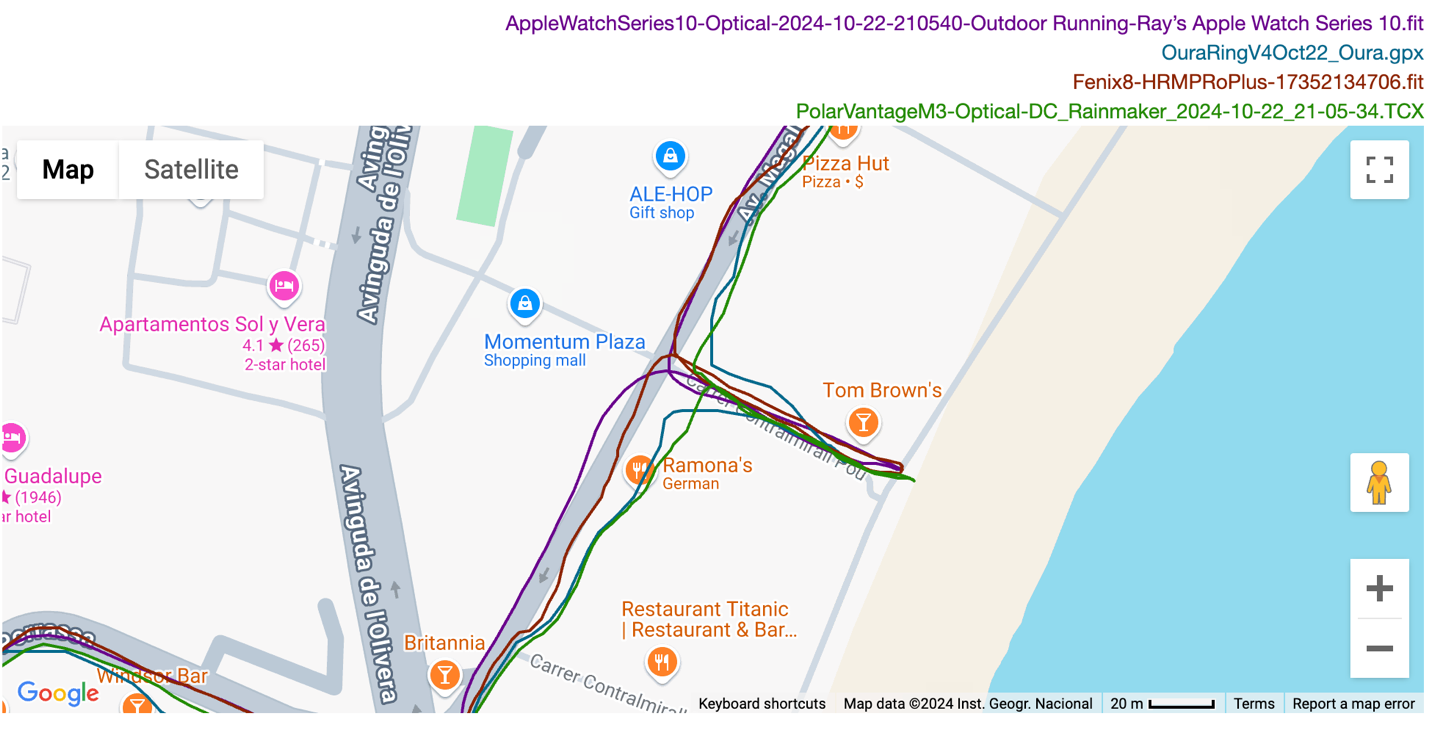
That said, up in the mountains on twisty-turning roads while cycling (including at speed), it had zero issues nailing the tracks:
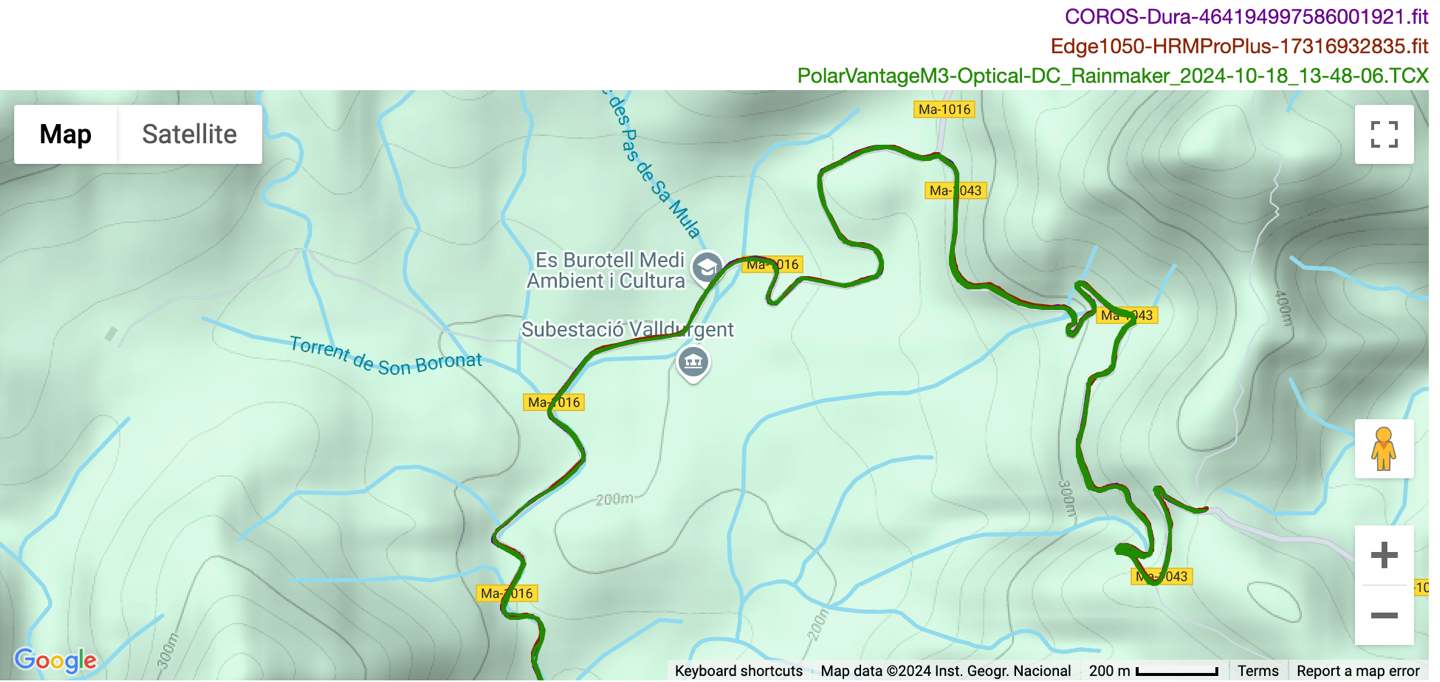
And speaking of those mountains, here’s the elevation profile. I see a few meters difference to the dedicated bike computers, but it’s a pretty consistent offset, and overall, very close:

Ultimately, Polar seems to have done a generally good job with both heart rate and GPS accuracy on the Polar Vantage M3, across both these sets above, as well as other workouts I’ve done with it.
New Features Next Year:
In addition to announcing the Polar Vantage M3, Polar has also announced a new software update for the M3/V3 & Grit X2 Pro, that’ll come early next year sometime (Q1 2025). That update has four core components (screenshots below):
– Adding new watch faces
– Adding a new workout launcher
– Adding POI (points of interest) data to the offline maps
– Adding ‘Find my Phone’ feature
Notably, with the POI feature, you can both show and navigate to various POI points. Do note that POI is different then road/trail names.
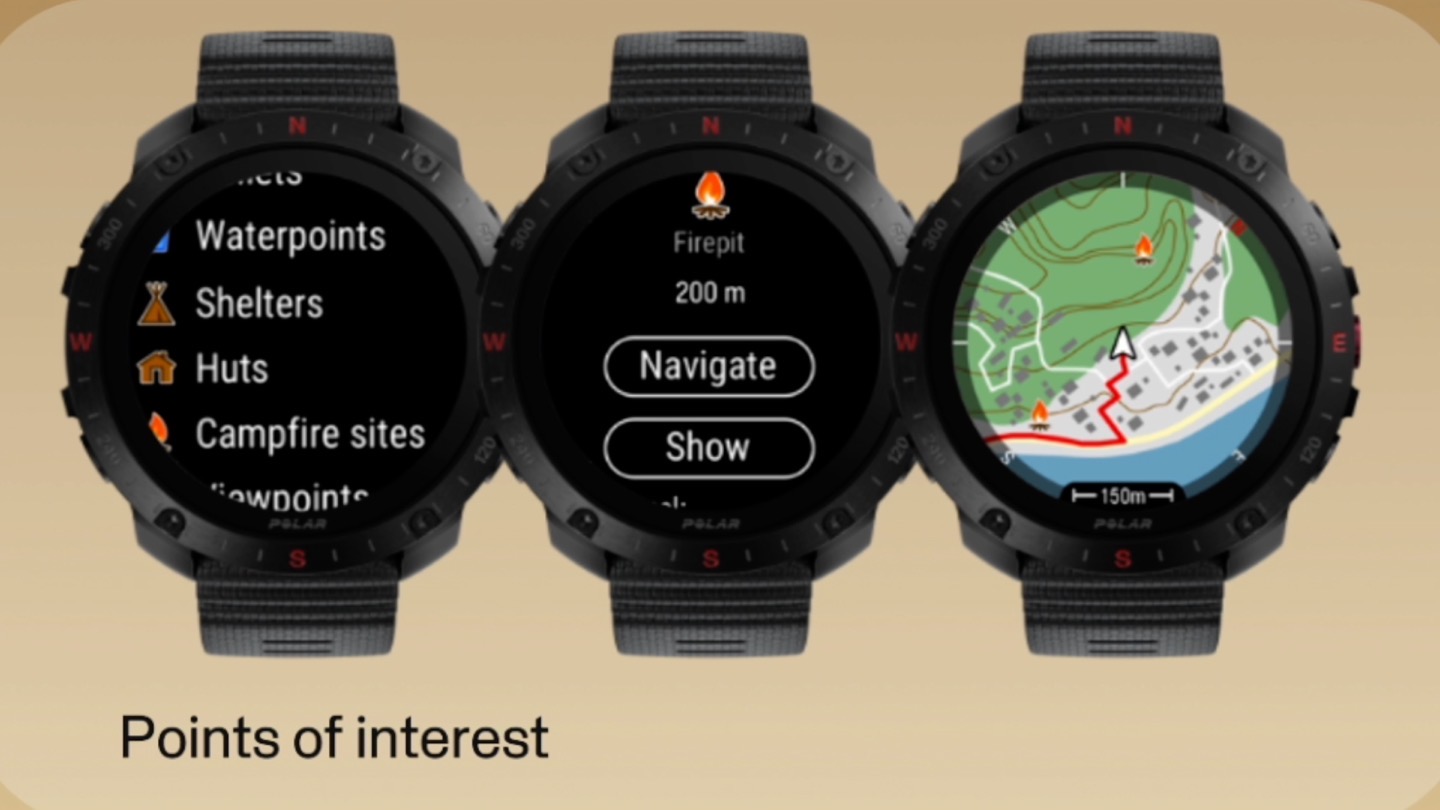
Here’s what the new workout launcher will look like (pictures all from Polar):
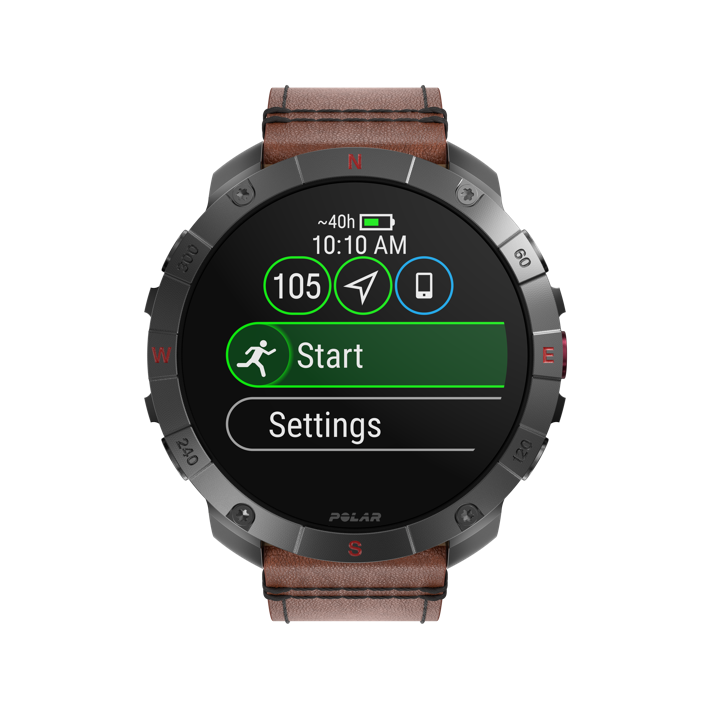
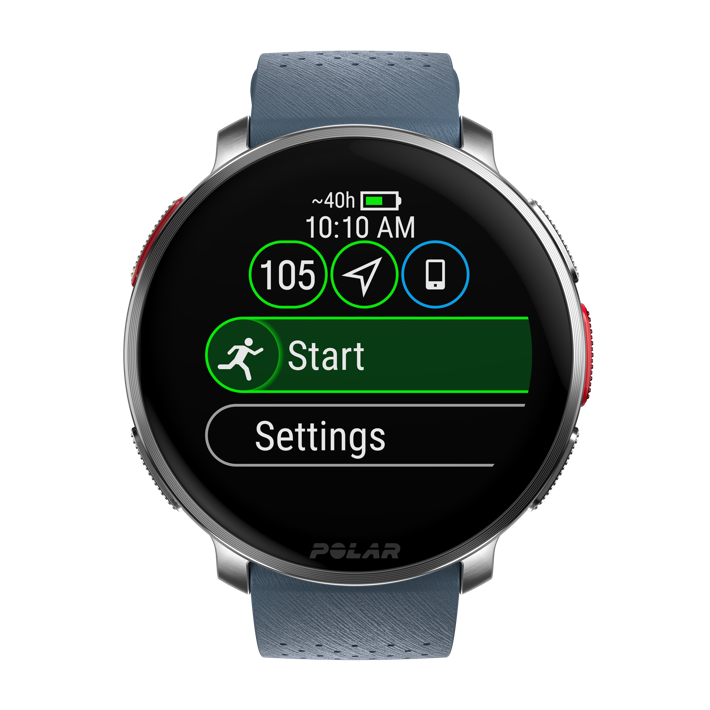
And then the new find my phone feature:
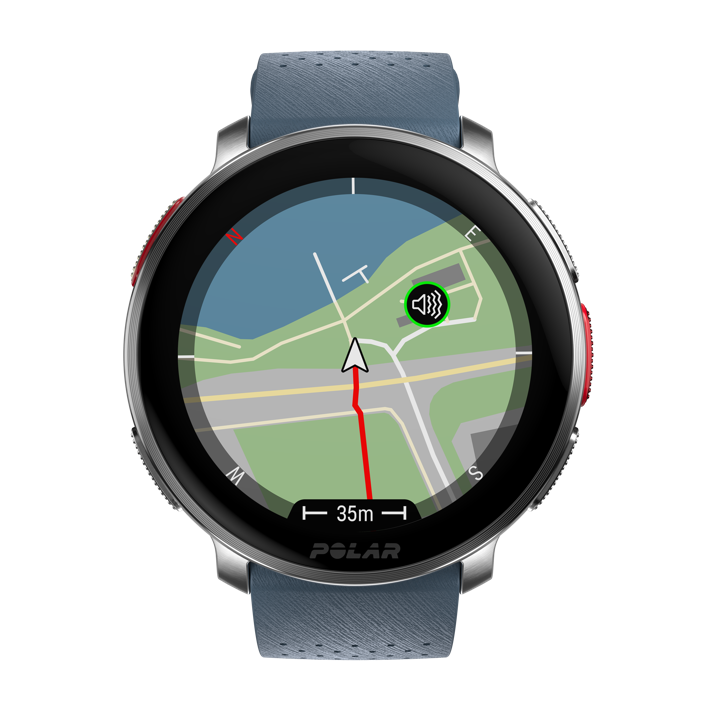
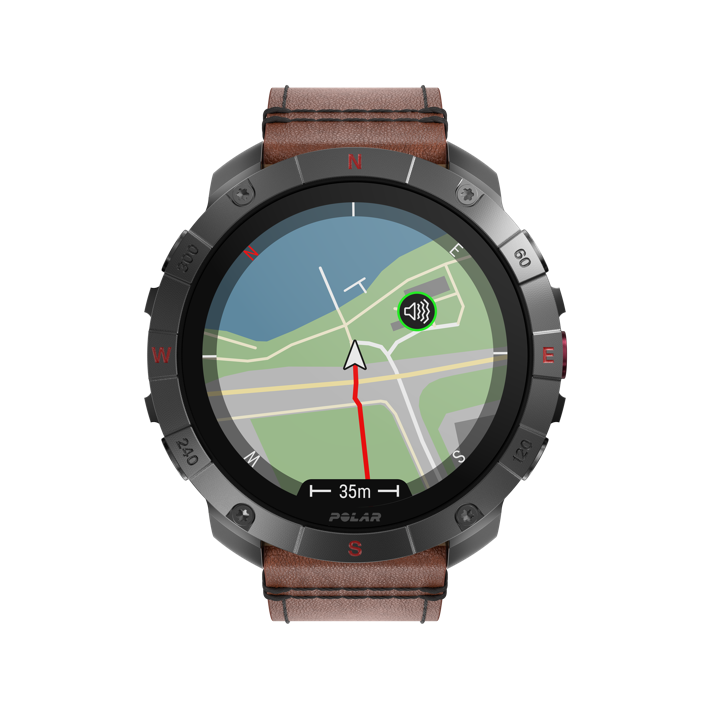
And then finally the new watches:
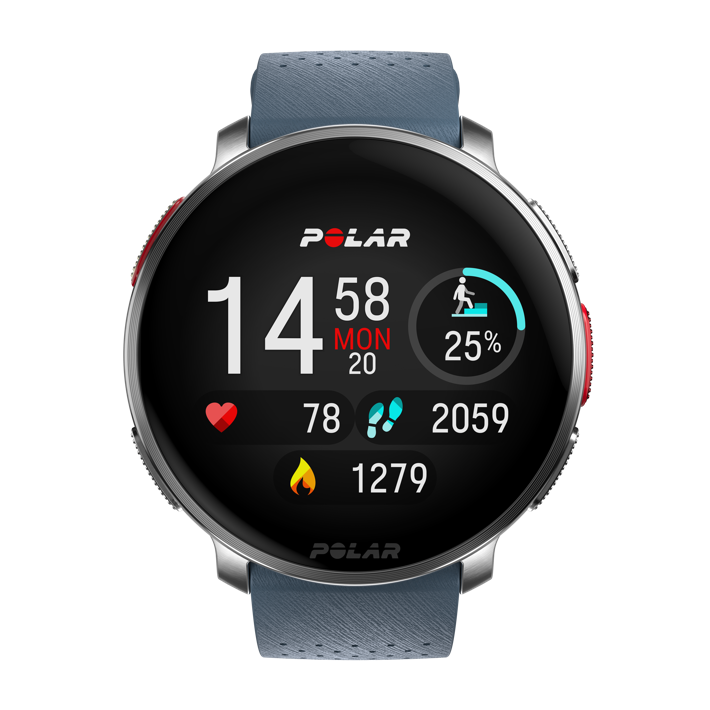
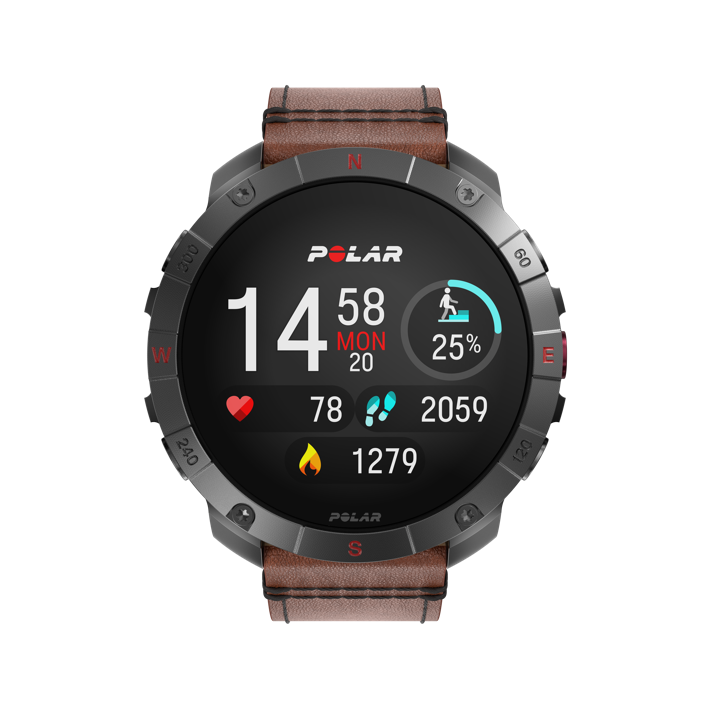
In addition, in that same Q1 2025 timeframe, Polar will (finally) roll out TrainingPeaks integration for structured workouts. Thus, you’ll be able to push a structured workout from TrainingPeaks to your Polar Flow account, and then onwards to your watch.
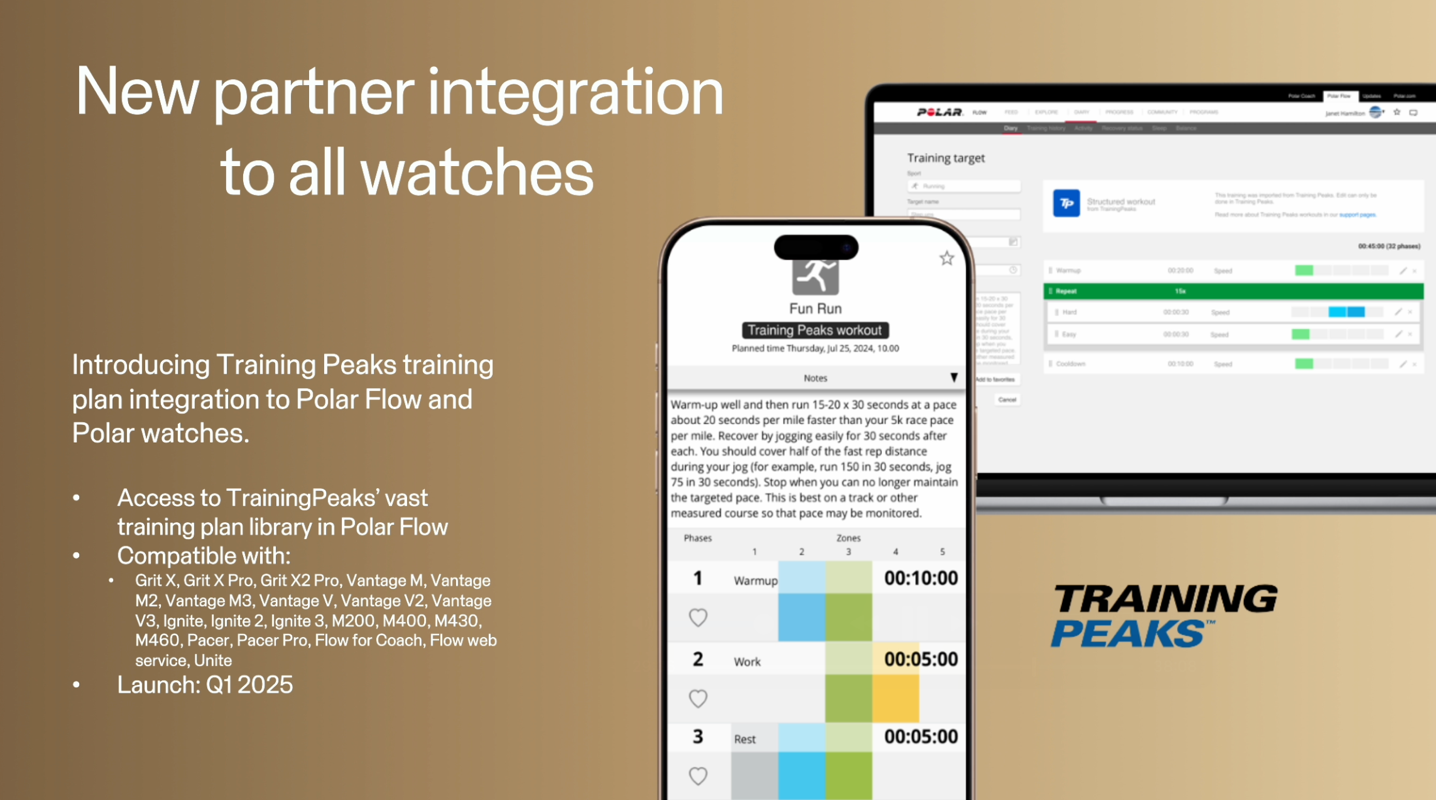
Notably, this will basically support just about every halfway recent Polar Watch from the last long while, including:
– Grit X, X Pro, X2 Pro
– Vantage M, Vantage M2, Vantage M3
– Vantage V, Vantage V2, Vantage V3
– Nacho Cheese, Nacho Cheese Pro
– Ingite, Ignite 2, Ignite 3
– M200, M400, M430, M460
– Pacer, Pacer Pro
– Unite
– Flow for Coach, Flow for Web Service
Got all that? Good. I’ll dig into it once it is released next year.
Final Thoughts:

While I’ve been critical of Polar’s pricing of their other two new watches (Vantage V3, and especially Grit X2 Pro), I think the Polar Vantage M3 is actually pretty reasonably priced for a somewhat premium mid-range watch (in terms of looks/feel). Polar certainly has the backend features now on the Polar Flow platform to justify a $399 price point, even if that Polar Flow platform is showing a bit of age these days. In terms of the M3 and my testing over the past while, it’s generally doing well in terms of accuracy and usability during workouts. I’ve seen a couple weird display quirks (such as seen while recording my video), but on the whole things are working as expected.
If I look at Polar going forward though, they really need to expand and invest more in their firmware (and platform) development teams. Given the next feature update is 3-6 months away (depending on when in Q1 2025 it lands), we’re talking basically a year between feature updates for their watch platform. And said planned update set is only 4 features, 3 of which are pretty minor. Most of their competitors are dropping 3-5x that number of feature updates each quarter, across vast swaths of watches (see COROS or Garmin, and even Suunto if you include their flotilla of apps they develop each quarter).
That said, I think Polar is on the right track hardware-wise, and I greatly appreciate the concept of a single software platform (and single set of features) shared across numerous hardware options. Thus, you can pick which price point matches your budget and still have the same software features as the watch twice the price. I love that concept, and wish more companies would do it. But that can’t come at the expense of slow feature development.
Nonetheless, I think for the meantime, the Polar Vantage M3 will be a solid upgrade option for existing Polar users that may own a wide swath of older Polar watches that would be ripe for upgrade to something like the M3, gaining those users a heap of features.
With that – thanks for reading!

0 Commentaires